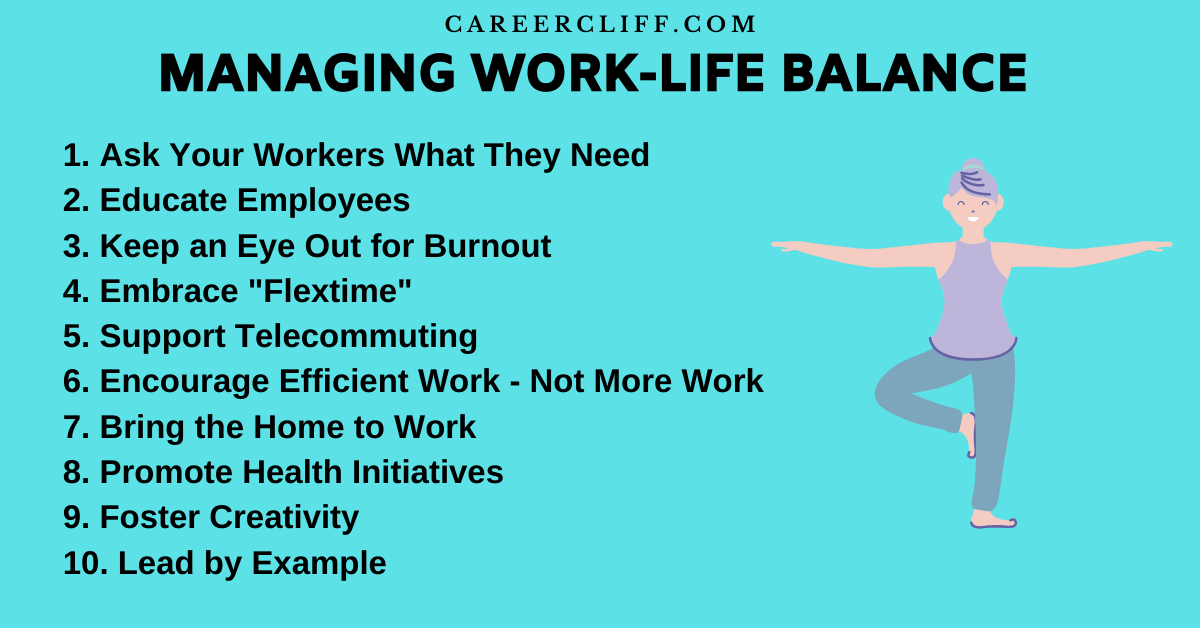
Effective Strategies for Managing Stress and Work-Life Balance
Introduction
Modern life can often be overwhelming, with constant demands from work and personal responsibilities. Balancing both can lead to heightened stress levels and negative effects on mental and physical well-being. However, by implementing effective strategies, individuals can regain control, reduce stress, and establish a healthy work-life balance.
Recognize and Prioritize
The first step in managing stress is recognizing its presence. Pay attention to physical and mental signs of stress, such as muscle tension or difficulty concentrating. Once stress is acknowledged, it is important to prioritize tasks and responsibilities. Determine what is urgent and important and focus on those aspects, while eliminating or delegating less critical tasks. By doing so, you can prevent overwhelming workloads and reduce unnecessary stress.
Establish Boundaries
Creating clear boundaries between work and personal life is crucial. Set specific working hours and try to stick to them. Avoid checking work emails or engaging in work-related tasks during personal time. Communicate these boundaries with colleagues and supervisors, ensuring they understand and respect your need for downtime. By setting boundaries, individuals can enjoy personal time without constant work-related stressors.
Practice Self-Care
Engaging in self-care activities is essential for managing stress and maintaining work-life balance. Allocate time each day for activities that promote relaxation and well-being. This can include exercise, meditation, hobbies, or spending quality time with loved ones. Self-care activities help recharge energy levels, reduce stress, and increase resilience in dealing with daily challenges. By prioritizing self-care, individuals can better manage stress and achieve a healthy work-life balance.
Time Management Techniques
Implementing effective time management techniques is vital for reducing stress and creating a work-life balance. Utilize tools such as to-do lists, calendars, or mobile apps to organize and prioritize tasks. Break larger tasks into smaller, manageable steps, and allocate time slots to complete them. Practice the Pomodoro Technique, where you work uninterrupted for short bursts of time, followed by short breaks. This technique enhances productivity and minimizes stress levels. Effective time management allows you to complete tasks efficiently, leaving more time for personal activities.
Delegate and Seek Support
One person cannot accomplish everything alone. Learn to delegate tasks and responsibilities, both at work and in personal life. Identify areas where others can assist and trust them to handle those tasks. Delegation not only lightens your workload but also fosters teamwork and collaboration. Additionally, do not hesitate to seek support when needed. Share your concerns, challenges, and workload with supportive colleagues, friends, or family members. Sharing burdens alleviates stress and helps you maintain equilibrium between work and personal life.
Conclusion
Managing stress and achieving work-life balance is an ongoing process that requires effort and commitment. By recognizing and prioritizing tasks, establishing boundaries, practicing self-care, implementing time management techniques, delegating responsibilities, and seeking support, individuals can effectively manage stress and establish a healthy work-life balance. Remember, investing time and energy into achieving this balance benefits both personal well-being and overall productivity.

